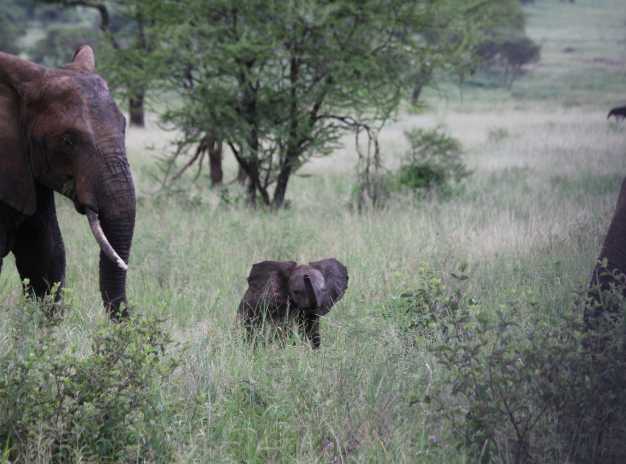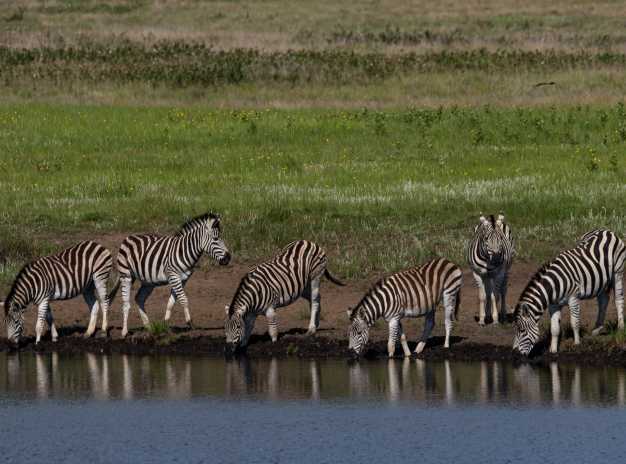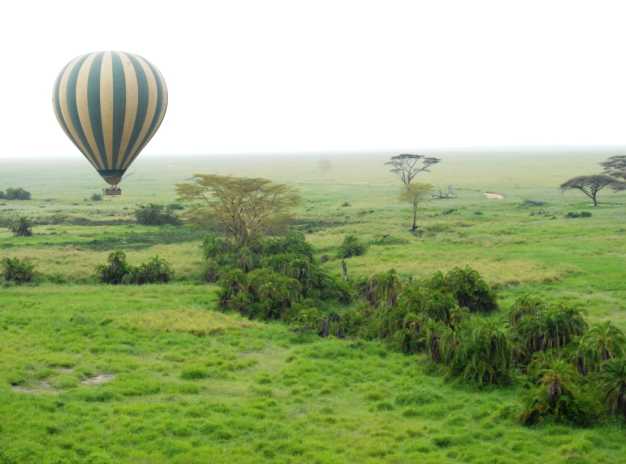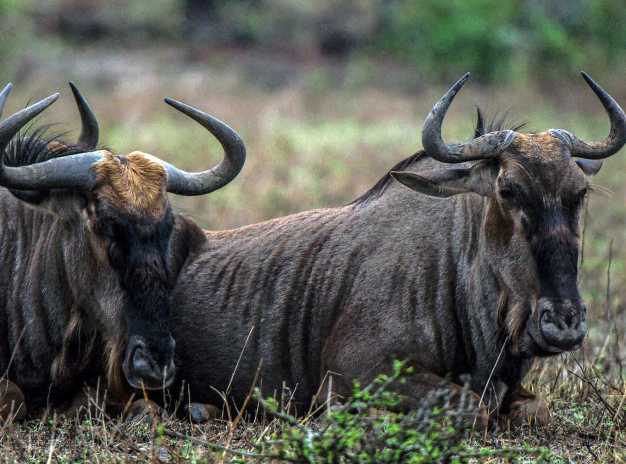Great Migration from July to October
In late June/early July, herds traverse from the western Serengeti to the northern regions. By Mid July, they gather in huge numbers in North Serengeti aiming to cross the mighty Mara River to get to the greener regions on the other side. Observe as these courageous herbivores navigate the challenging waters, overcoming obstacles and braving predators in their quest for greener pastures. These crossings happen all the way till October and can be seen both in North Serengeti as well as Masai Mara during this period. In October the wildebeests start heading southwards, through eastern Serengeti.

We use equipment of international standards & our guides are trained in First aid & personal protection equipment

We reward our staff based on your feedback & that results in all of us working towards making your trip memorable

Our guides are trained to pay attention to each clients requirements & situation & customize the program accordingly

Once a tour is booked, its guaranteed to go, even if there is only single client for the entire trip

Book by paying advance by card on our website. Balance can be paid upon arrival, before the tour

Our minimum requirement for operation is only one client. So we can offer the tour any day of the year for you
FAQs for Great Migration from July to October
1. Where can you see Migration in July/August/September/October? In Early July, great migration will be moving towards North Serengeti. In some years, they would have reached North Serengeti in huge numbers by early July itself and in other years, they might be scattered from western Serengeti to North Serengeti by early July, reaching North Serengeti in large numbers by around Mid July.
From Mid July to Mid September, you can see the migration in North West Serengeti, in the areas along the mara river called Kogatende, Lamai. The herds try to cross the crocodile infested Mara river to get to the other side. Nearly half of the herds will move into neighbouring Masai Mara national reserve in Kenya where the river crossings can be seen as well during this period.
In Late September/October, the herds move from North West Serengeti to North East Serengeti and sometime in October or early November, they move from North East Serengeti to Eastern/Central Serengeti.
2. Which part of Serengeti do you recommend to stay during this period to see the great migration?
From July to September, we recommend staying in North Western Serengeti, in the Kogatende or Lamai regions In October, we recommend staying in the North Eastern part of Serengeti, in the bologonja region. However, these areas are not too far from each other and often the migration is spread in a wide region and there is other wildlife to be seen along the way. And because of the limited number of accommodations in North Serengeti, staying almost anywhere in North Serengeti can be considered for seeing migration between July to October.
3. What is the weather like in Northern Serengeti during the Great Migration period? July to October is the period of Dry Season, so the weather will remain pleasant and conditions will be dry. Temperatures will dip at night, so we advise you to pack a couple of warmer clothings for this time.
You will find dry and dusty roads, and thinned out vegetation that will allow excellent views of the wildlife.
4. Can you provide more information about the accommodations available in the migration region during this time? Most of the accommodations in the migration region are seasonal camps, set up for a few months in a year when the migration is expected to reach this region. These seasonal migrational camps are all ensuite accommodations and come in a wide range of budget, starting from low budget to high end luxury tented camps. There are also a few permanent tented lodges/lodges in the migration region that range from Mid tier to luxury accommodations.
5. What is the recommended duration of stay in North Serengeti to witness the Great Migration? We would recommend staying at least two to three days in this region to enjoy game drives, have a good chance of watching the river crossings, and engage in optional tours such as hot air balloon rides, walking safaris.
6. Is there a specific best time within the July to October period to maximise the chances of watching river crossing during the Great Migration? Between Mid July to Late September most herds will reach North Serengeti and many will be crossing the river to get into Masai Mara, Kenya so this period is one of the best times to catch the river crossings.
In October, herds will be coming back from Masai Mara and once again cross the Mara river, so this is yet another time to maximise your chances of spotting the river crossings.
7. What are the chances to witness the river crossing during my tour? During late July to September at Northern Serengeti, some clients see river crossing event 2 or even 3 times in a single day while some don't see a single crossing after waiting for 3 days. We estimate that you will be able to witness the river crossing with about 40-50% odds after spending 3-4 hours at the river bank. So more time/more days you spend, higher chances of seeing river crossing event.
8. Are there specific times of day that are better for observing the river crossings? River crossings can happen anytime during the day. The guide will be reading the behaviour of wildebeests and stay in touch with his colleagues in the region to get regular updates on wildebeests movement and will try to take you to the crossing points when the crossing is most likely to happen. Relatively, more crossings happen between 12 to 4 P.M.
9. What is the estimated number of herbivores involved in the Great Migration during this period? The migration is composed of over 2 million herbivores.
10. Are there any other notable wildlife species that can be seen apart from the migrating herds? Besides the notable Wildebeests, the Migration itself is also composed of Zebras and Thomson’s Gazelles. In addition, in the Southern Serengeti and Ndutu region itself you will be able to spot countless iconic species like giraffes, elephants, buffalos, hartebeests, impalas, hyenas, cheetahs, lions and more.

We use equipment of international standards & our guides are trained in First aid & personal protection equipment

We reward our staff based on your feedback & that results in all of us working towards making your trip memorable

Our guides are trained to pay attention to each clients requirements & situation & customize the program accordingly

Once a tour is booked, its guaranteed to go, even if there is only single client for the entire trip

Book by paying advance by card on our website. Balance can be paid upon arrival, before the tour

Our minimum requirement for operation is only one client. So we can offer the tour any day of the year for you





